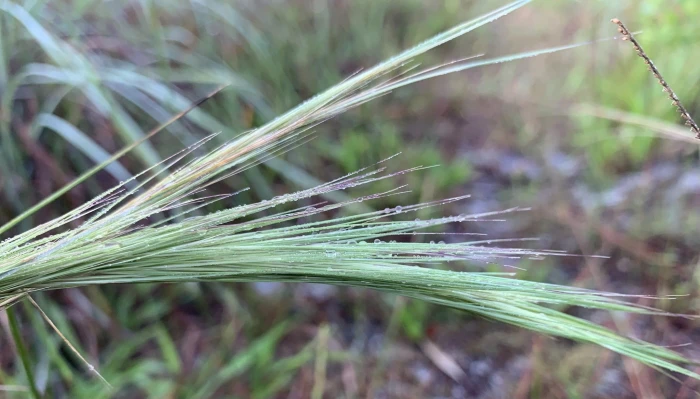Bottlebrush Threeawn
(Aristida spiciformis)
Bottlebrush Threeawn (Aristida spiciformis)
/
/

mark-groeneveld
CC BY 4.0
Image By:
mark-groeneveld
Recorded By:
Copyright:
CC BY 4.0
Copyright Notice:
Photo by: mark-groeneveld | License Type: CC BY 4.0 | License URL: http://creativecommons.org/licenses/by/4.0/ | Rights Holder: mark-groeneveld | Publisher: iNaturalist | Date Created: 2022-08-18T11:44:57Z |

























Estimated Native Range
Climate Requirements
| • Precipitation | 40" - 66" |
| • High Temp. | 89°F - 107°F |
| • Low Temp. | 30°F - 64°F |
Summary
Aristida spiciformis, commonly known as Bottlebrush Threeawn or Bristleawn Spear Grass, is a perennial grass native to southeastern United States and the West Indies. It is particularly adapted to open areas with sandy or rocky soils. This species exhibits a moderate growth rate, reaching heights of 1.5-3 feet (0.46-0.9 meters). Its distinctive inflorescence resembles a bottlebrush, hence the common name, and it typically flourishes in the warm seasons.
Bottlebrush Threeawn is valued for its unique texture and form in garden settings, particularly in xeriscaping and naturalized areas where water conservation is a priority. It is drought-tolerant, requiring minimal water once established, and thrives in full sun. The plant’s ability to grow in poor soils makes it a versatile choice for challenging sites. However, it is not commonly used in small gardens due to its less showy nature. In cultivation, it is important to avoid overwatering and to provide well-draining soil to mimic its native habitat conditions. While generally low-maintenance, it can be susceptible to rust diseases under certain conditions.CC BY-SA 4.0
Bottlebrush Threeawn is valued for its unique texture and form in garden settings, particularly in xeriscaping and naturalized areas where water conservation is a priority. It is drought-tolerant, requiring minimal water once established, and thrives in full sun. The plant’s ability to grow in poor soils makes it a versatile choice for challenging sites. However, it is not commonly used in small gardens due to its less showy nature. In cultivation, it is important to avoid overwatering and to provide well-draining soil to mimic its native habitat conditions. While generally low-maintenance, it can be susceptible to rust diseases under certain conditions.CC BY-SA 4.0
Plant Description
- Plant Type: Grass
- Height: 1.5-3 feet
- Width: 1-2 feet
- Growth Rate: Moderate
- Flower Color: N/A
- Flowering Season: Summer, Fall
- Leaf Retention: Deciduous
Growth Requirements
- Sun: Full Sun
- Water: Low
- Drainage: Fast, Medium
Common Uses
Drought Tolerant, Erosion Control, Low Maintenance
Natural Habitat
Native to the grasslands and savannas of southeastern United States and the West Indies
Other Names
Common Names: Bristleawn Spear Grass
Scientific Names: Aristida spiciformis , Aristida spiciformis subsp. antillarum , Aristida spiciformis var. antillarum , Aristida spiciformis var. spiciformis , Aristida squarrosa , Aristida stricta , Chaetaria squarrosa
GBIF Accepted Name: Aristida spiciformis